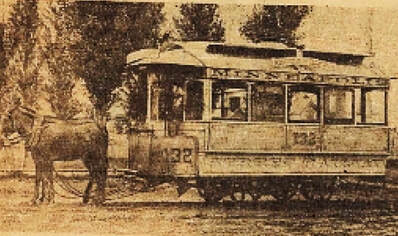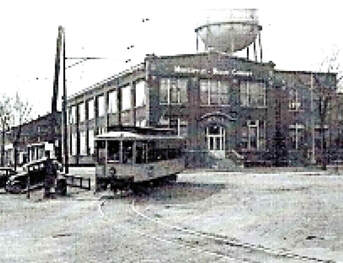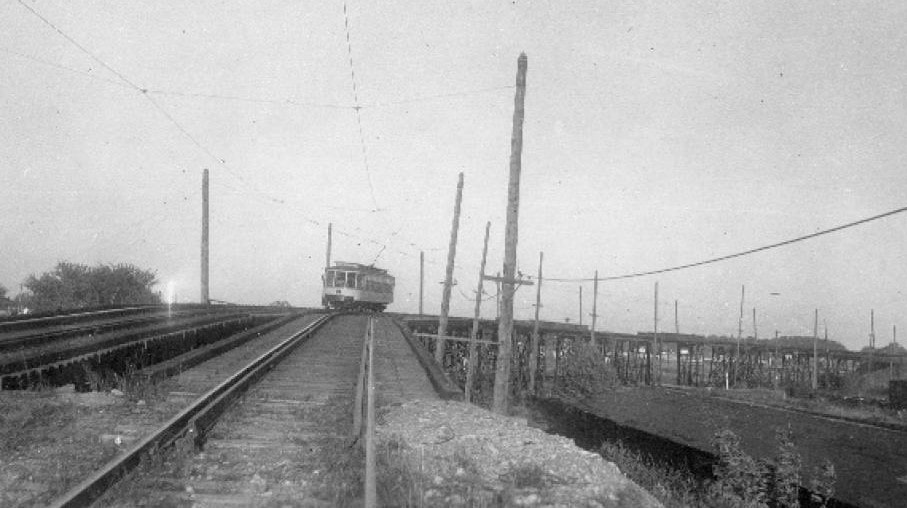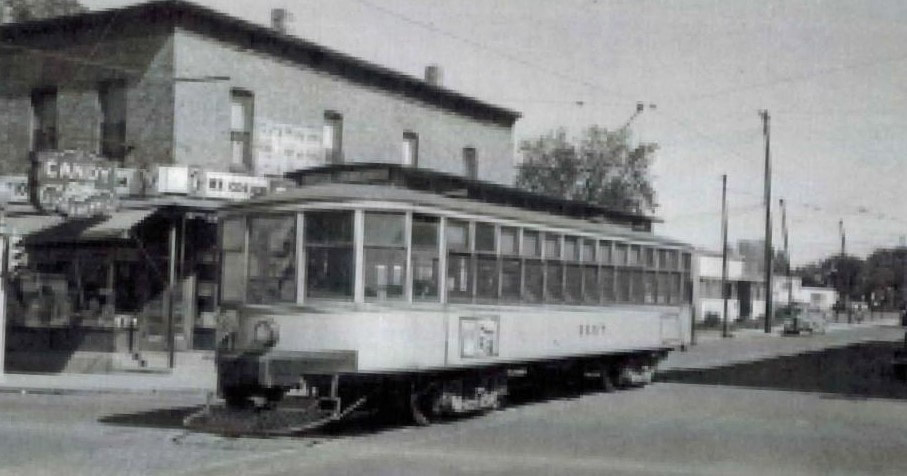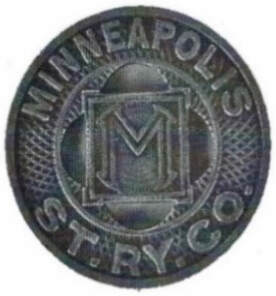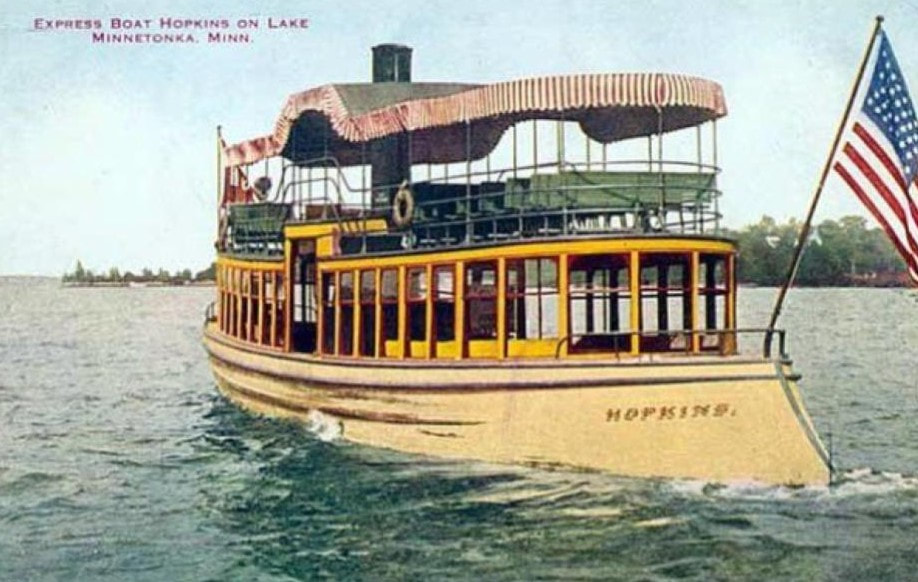This history article comes from one of our newsletters. Newsletters are a benefit of membership with the Hopkins Historical Society. Learn more here: |
New Southwest Light Rail Brings Back Old Memories
by Mary Raabe
first published in 2020
Streetcar Boats Join the Hopkins Line
|
In 1905, Thomas Lowry extended his Hopkins service to Lake Minnetonka to access the Big Island Amusement Park, lake area hotels, resorts and points of interest. He built a fleet of canary yellow streetcar boats, similar in design to complement his company’s land-based streetcars. During the winter of 1905–1906 the Twin City Rapid Transit constructed six 70-foot streetcar boats in its South Minneapolis streetcar shop. Each had a 14-ton steam engine and could accommodate 65 passengers inside and another 65 riders on the upper deck. Building these huge boats in a streetcar shop had to be a story in and of itself!
In the spring of 1906, these six streetcar boats were carefully loaded onto flat beds, transported to Excelsior, and launched into Lake Minnetonka. The boats bore the names of six stops on its transportation network–the Minnehaha, Como, Harriet, Hopkins, Stillwater, and White Bear. These neat and stately streetcar boats ferried passengers in great style until access roads were constructed around Lake Minnetonka to accommodate the automobile. In 1926, with ridership down, three of the streetcar boats were scuttled, sunk on purpose, north of Big Island. The Como, White Bear, and Minnehaha were unceremoniously stripped of their superstructures, filled with red clay roofing tile from the old Big Island Pavilion, and scuttled. A few years later, the Stillwater and the Harriet joined their sisters and were scuttled as well. The only remaining streetcar boat was the Hopkins, which was eventually painted a nondescript white, renamed the Minnetonka, and summoned into charter service. The streetcar line between Hopkins and Lake Minnetonka finally stopped running in 1932, and in 1949 the Minnetonka was also sunk, her whereabouts unknown.
|
Many divers had tried to find these boats, but they remained elusive, entombed in their deep-water graves until the summer of 1979. During a routine dive to test deep water equipment for the North Dakota Garrison Diversion Project, an unsuspecting diver was dropped directly on top of the Minnehaha’s hull–in 65 feet of cold dark water! What a surprise that must have been.
Plans to salvage the Minnehaha began almost immediately. It took 3 cranes, 20 divers, 8 airbags, and 6 days, but the Minnehaha was finally lifted up in the summer of 1980. The hull was in remarkably good condition, with the vessel’s cypress planking still firmly attached to its oak ribs. Ten years later, after resolving legal and ownership issues, restoration by the Minnesota Transportation Museum began. It took six years and 80,000 hours of volunteer time before the Minnehaha could be relaunched, but relaunched she was, to become a popular summer attraction on Lake Minnetonka. At least until now. It was recently announced that the Minnehaha's 2020 sailing season has been cancelled. The current launch site is being sold and the Museum of Lake Minnetonka is working hard to secure a permanent home for the Minnehaha.
By the 1950s, the era of the streetcar was forced to come to a close, its dominion over public transportation relinquished to city and suburban buses. The last streetcar left Hopkins on August 3, 1951, and the last streetcar left Minneapolis in the summer of 1954.
|
Light Rail Returns to Hopkins
And now, after a 70-year absence, the era of electric streetcars is about to return to Hopkins. In many parts of town one can see evidence of light rail construction that will serve Hopkins starting in 2023. Our new viaduct is already being built. They call it a bridge now and it will span Excelsior Boulevard and the railroad track on the east end of town.
The new light rail cars will be different–a lot more streamlined, without a hint of ozone or the smell of hot oil. Nothing will spark and sizzle. And no one will ever have to get out and push it up a hill! But as much as we welcome this new and efficient form of travel, we still remember with great nostalgia that meandering and scenic trolley ride from Hopkins to Minneapolis, over the viaduct, through Edina’s countryside and around the Minneapolis lakes. There are no time machines and we can’t turn back the clock; but if we could, who wouldn’t give up their soft-drink holders, air conditioning, and dashboard phones for one last ride on that charming yellow trolley that graced and served Hopkins for well over five decades?
For the true trolley enthusiast, the old 1300 Como Harriet car that ran near lake Harriet in Minneapolis was restored in the fall of 1971 and is available for rides from Memorial Day through Labor Day. See trolleyride.org for more information.
The new light rail cars will be different–a lot more streamlined, without a hint of ozone or the smell of hot oil. Nothing will spark and sizzle. And no one will ever have to get out and push it up a hill! But as much as we welcome this new and efficient form of travel, we still remember with great nostalgia that meandering and scenic trolley ride from Hopkins to Minneapolis, over the viaduct, through Edina’s countryside and around the Minneapolis lakes. There are no time machines and we can’t turn back the clock; but if we could, who wouldn’t give up their soft-drink holders, air conditioning, and dashboard phones for one last ride on that charming yellow trolley that graced and served Hopkins for well over five decades?
For the true trolley enthusiast, the old 1300 Como Harriet car that ran near lake Harriet in Minneapolis was restored in the fall of 1971 and is available for rides from Memorial Day through Labor Day. See trolleyride.org for more information.
Sources
Anderson, Steve. “A Streetcar Named Persistence.” Sun Newspaper, 25 June 1974.
Blomquist, Clint. History of Electric Trains in the Hopkins Area. 1980.
“Cities Trolleys Go Clanging into Oblivion.” Minneapolis Sunday Tribune, 13 June 1954.
“A Dark Dive Brings and Old Boat to Light in Minnetonka.” Minneapolis Star, 31 July 1979.
Diers, John W., and Aaron Isaacs. Twin Cities by Trolley: the Streetcar Era in Minneapolis and St. Paul. University of Minnesota Press, 2007.
Johnson, Walter. “Not a Street Car in Sight.” Minneapolis Star, 9 June 1954.
Norman, Amanda. Human Geography Cultural Landscape 44*55’30”N93*27’46W. 2015.
Peterson, Eric Sayer. The Little Yellow Fleet: a History of the Lake Minnetonka Streetcar Boats. Minnesota Transportation Museum, 1994.
Read, Katy. “Salvaged Steamboat Needs a New Launchpad.” Minneapolis Star Tribune, 1 Dec. 2019.
“When Streetcars Ran on Lake Minnetonka.” Minneapolist Star and Tribune Magazine, 2 Sept. 1985.
Blomquist, Clint. History of Electric Trains in the Hopkins Area. 1980.
“Cities Trolleys Go Clanging into Oblivion.” Minneapolis Sunday Tribune, 13 June 1954.
“A Dark Dive Brings and Old Boat to Light in Minnetonka.” Minneapolis Star, 31 July 1979.
Diers, John W., and Aaron Isaacs. Twin Cities by Trolley: the Streetcar Era in Minneapolis and St. Paul. University of Minnesota Press, 2007.
Johnson, Walter. “Not a Street Car in Sight.” Minneapolis Star, 9 June 1954.
Norman, Amanda. Human Geography Cultural Landscape 44*55’30”N93*27’46W. 2015.
Peterson, Eric Sayer. The Little Yellow Fleet: a History of the Lake Minnetonka Streetcar Boats. Minnesota Transportation Museum, 1994.
Read, Katy. “Salvaged Steamboat Needs a New Launchpad.” Minneapolis Star Tribune, 1 Dec. 2019.
“When Streetcars Ran on Lake Minnetonka.” Minneapolist Star and Tribune Magazine, 2 Sept. 1985.

